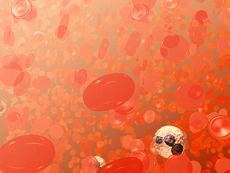 |
 |
 |
||
    |
||||
|
||||
|
Other Health Topics:
Platelet Disorders
Also called: Thrombocyte disorders
Platelets help wounds heal and prevent bleeding by forming blood clots. Your bone marrow makes platelets. Problems can result from having too few or too many platelets, or from platelets that do not work properly. If your blood has a low number of platelets, you can be at risk for mild to serious bleeding. If your blood has too many platelets, you may have a higher risk of blood clots. With other platelet disorders, the platelets do not work as they should. For example, in von Willebrand Disease, the platelets cannot stick together or cannot attach to blood vessel walls. This can cause excessive bleeding. Treatment of platelet disorders depends on the cause. National Heart, Lung, and Blood Institute
|
| Home | Health Topics | Drugs & Supplements | Encyclopedia | Dictionary | News | Directories | Other Resources | |
| Disclaimers | Copyright | Privacy | Accessibility | Quality Guidelines U.S. National Library of Medicine, 8600 Rockville Pike, Bethesda, MD 20894 National Institutes of Health | Department of Health & Human Services |
Date last updated: 21 July 2009 Topic last reviewed: 22 June 2009 |


